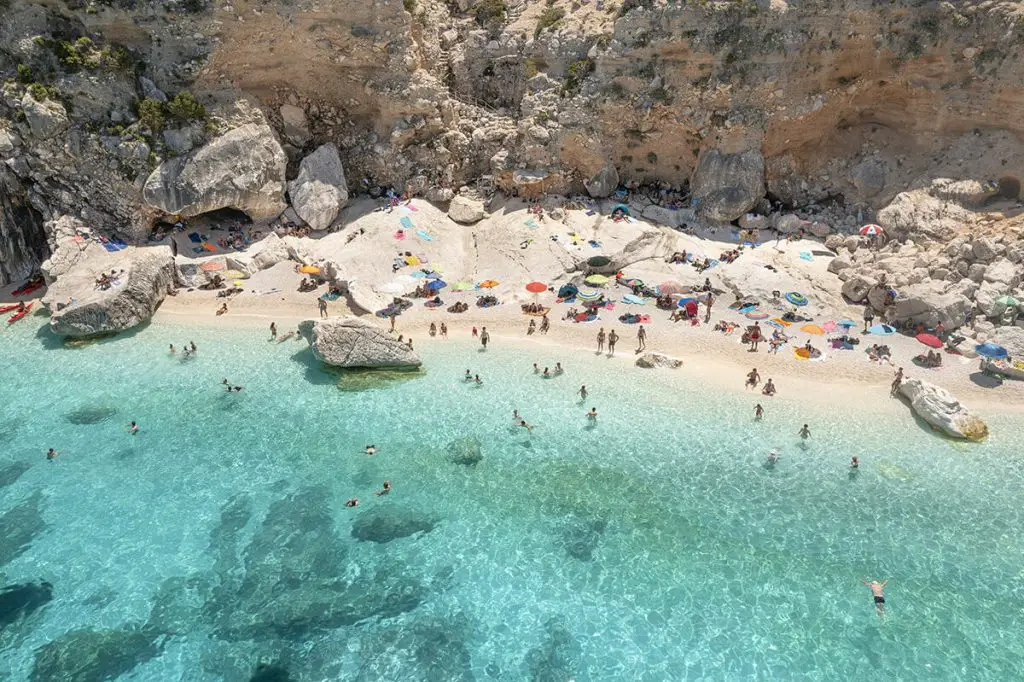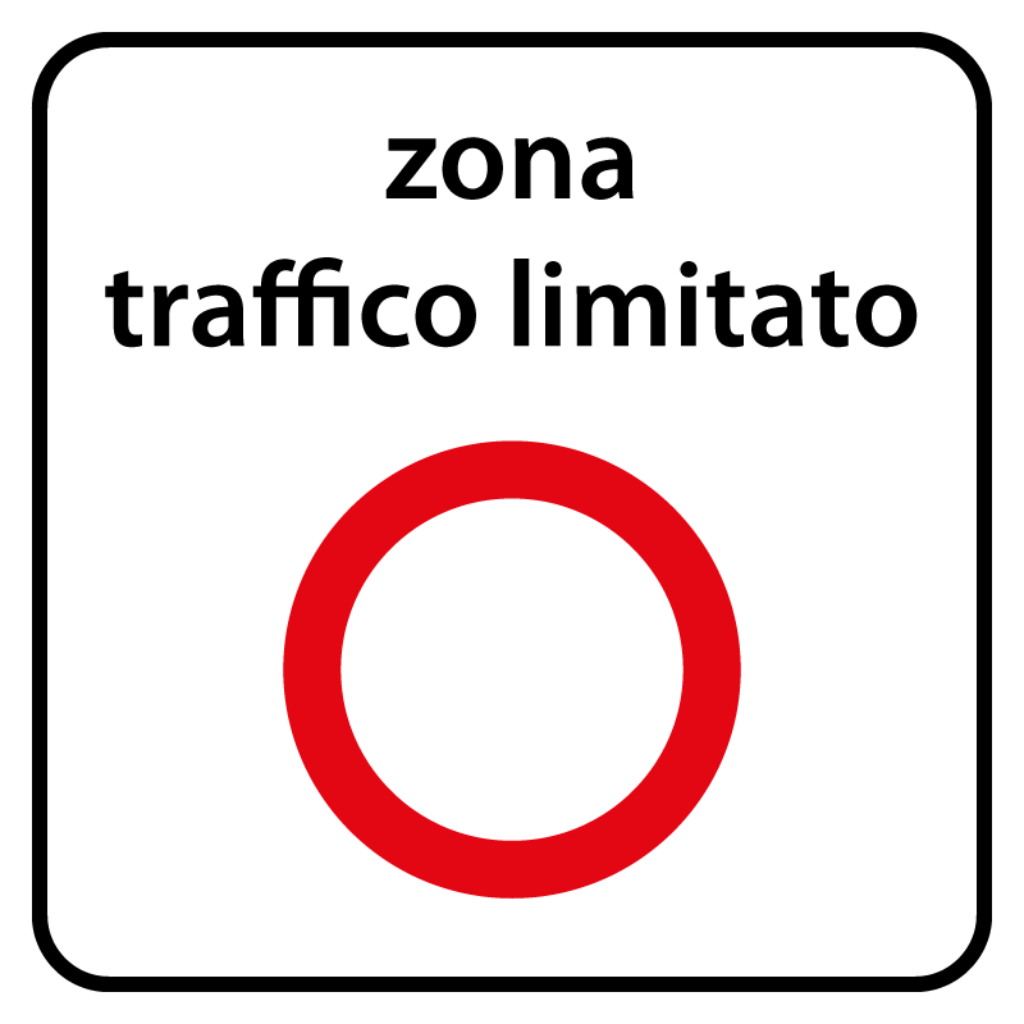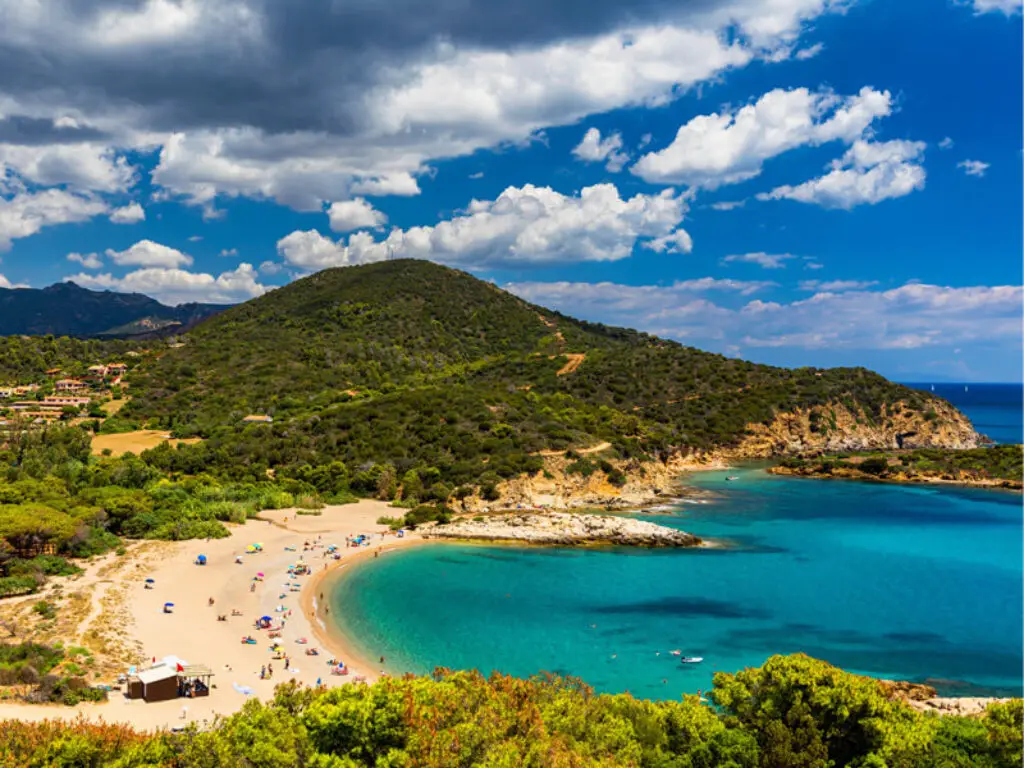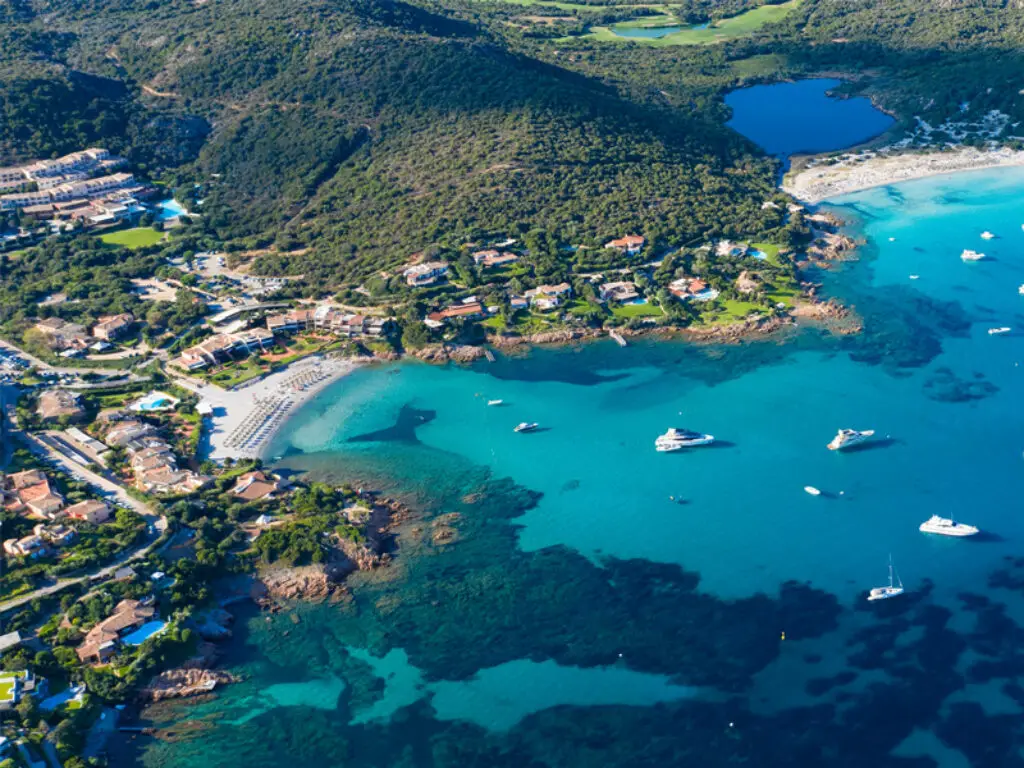Is it Worth Hiring a Car in Sardinia?
Sardinia is wonderfully diverse, with quaint villages, many secluded beaches and stunning landscapes that is perfect for exploration. You have the option to use public transport or hire a car to get around. Ultimately, figuring out if it’s worth hiring a car in Sardinia depends on your specific travel needs, preferences, and comfort level. In general;
It is worth hiring a car in Sardinia if you intend to explore less popular town or country areas. Hiring a car offers the flexibility to experience Sardinia’s hidden treasures despite the associated costs. However, if your intention is to stay within a specific area without much travel, public transport would be a more suitable and cost-effective option.
In this article I will go through what you would need to consider to determine whether it is worth hiring a car in Sardinia. I will discuss aspects such as the availability and efficiency of public transport, the expenses involved in hiring a car, other supplementary costs that you would need to factor into your budget and infrastructure and driving culture.
My husband preferred hiring a car in Sardinia to fully enjoy his trip. So this article is based on the information he relayed to me that is also supplemented by research.
Issues With Public Transport
One of the main reasons why it is worth hiring a car in Sardinia is if you would like the travel around with no restrictions.
Public transport is certainly a convenient option if you are staying in one specific area of Sardinia. In fact there is a guide on getting around Sardinia which has information about travel within Sardinia including public transport. However public transport is not the ideal choice if you are looking to explore the entire island.

Sardinia is known for its diverse landscapes, picturesque coastal towns, and hidden gems tucked away in the countryside. Public transport networks do not offer comprehensive coverage or frequent connections to these off-the-beaten-path destinations.
To do any of these three 5 day itineraries you would need to hire a car for part or all the trip. You could get away with hiring a car for part of the journey in the south, and the north. However for the central area you will need a car for the whole trip.
Sardinia’s public transport primarily consists of buses, but also a limited train network. While they serve major cities and popular tourist areas well, their schedules do not always align with every traveller’s itinerary.
The limited frequency of buses to more remote or lesser-known locations will restrict your ability to fully experience the island’s beauty and charm.
Flexibility
By opting to hire a car, you will gain the freedom to set your own pace, choose your destinations, and make spontaneous stops along the way. As a result you will have a more personalised and immersive exploration of Sardinia.
Moreover, having a car will allow you to make the most of your time on the island. It eliminates the need to wait for scheduled buses or adhere to specific timetables. It provides the flexibility to visit multiple attractions in a day and maximise sightseeing opportunities.
Therefore, hiring a car is a practical solution if you want the freedom and flexibility to explore all that Sardinia has to offer.
Additionally, with a car, you can easily access secluded beaches, remote mountain trails, and picturesque villages that are difficult to reach via public transport.
Convenience
The convenience of door-to-door transportation, especially when carrying beach equipment or luggage, further adds to the advantages of hiring a car in Sardinia. This way you are ensured a hassle-free and enjoyable travel experience.
Cost of Hiring a Car in Sardinia
The cost of hiring a car is one of the major considerations to figure out whether it is worth hiring a car in Sardinia. Sardinia may not offer the lowest car rental prices, but it is not as expensive as cities like Munich or Paris.
The cost of hiring a compact car in Sardinia is around €196 for a week, or €28 per day. A medium sized car costs €36 per day, large cars €37, station wagons €49, SUVs €34 and vans €70. Upgrading your basic insurance coverage to be fully insured will incur additional costs, and young drivers and senior drivers fees may apply.
Other costs and fees for hiring a car in Sardinia:
- Additional drivers
- Dropping off the car at different location to where you picked it up
- GPS rental, child seats and snow chains
- Fuel costs
For renting a car in Sicily, I recommend you use Discover Cars. They offer the convenience of comparing prices from various car rental companies in Sardinia, enabling you to find the most favourable deal. Plus if you book in advance you may get some better deals than the ones I quoted above.
Moreover, Discover Cars has established an excellent reputation and garnered a high Trustpilot rating. They consistently prioritising customer satisfaction and provide exceptional service.
Apart from the cost of the car and additional costs associated with it, there are also some other costs you may need to factor into your budget. Here I will go through road tolls , congestions taxes and parking fees in Sardinia so you know what to expect.
Tolls
Unlike mainland Italy and Sicily, Sardinia remains toll free. This is a notable advantage that makes travelling by car more convenient and cost-effective.
Congestion Taxes – ZTL Zones
What Are ZTL Zones?
ZTL stands for “Zona a Traffico Limitato,” which translates to Restricted Traffic Zone. ZTL zones are areas in Italian cities where access is restricted to certain vehicles or limited during specific hours.
Their purpose is to regulate traffic flow, reduce congestion, and protect historical or pedestrian areas within cities. They aim to prioritise pedestrians, cyclists, and public transport while limiting car traffic.
ZTL zones are enforced through cameras and other monitoring systems based on license plate recognition. These zones are clearly marked with specific signs indicating their boundaries. You should look for signs displaying “ZTL” that look like the one in the image.
These signs usually display additional information such as operating hours and access restrictions. The access restrictions in ZTL zones may vary depending on the city and specific area. The operating hours typically include busy periods during the day, such as mornings and evenings.

Generally, only authorised vehicles, such as residents’ cars, emergency vehicles, or vehicles with special permits, are allowed to enter during restricted hours. Non-residents or unauthorised vehicles entering ZTL zones without permission will face fines.
Towns with ZTL Zones
Almost every town in Sardinia has a ZTL zone including Alghero, Cagliari, Nuoro, Oristano, Pula and Sassari. This means you have to stay vigilante for ZTL signs and avoid going through those roads.
Fines
Fines for ZTL violations are typically around €50 to €80. They are issued to the registered owner of the vehicle up to 1 year after you go through a ZTL zone. However if you hired a car, the rental company will pass on the fine along with an administrative fee which usually amounts to around €130.
Temporary Permits for Tourists
In some cases, visitors or tourists may be eligible for temporary permits to enter ZTL zones during restricted hours. These permits are usually issued by the local authorities or sometimes provided by accommodations in the ZTL areas.
You should check with your accommodation or the local transportation authorities for information on obtaining permits, if available.
Parking
The cost of parking in Sardinia varies depending on the specific location and the time of day. In some areas parking is free.
To determine if you are required to pay you should, look for blue lines on the road. If there are blue lines you will need to pay and adhere to time restrictions, which are specified on nearby signs. If there are no lines and no parking signs, it is generally safe to assume that parking is free in that area.
In larger towns, cities, and popular tourist areas, you are likely to encounter metered parking spaces. Generally, parking fees in Sardinia range from around €0.50 euros to €2 per hour, depending on the city or town. However, parking is generally free on Sundays and public holidays.
You can usually pay for parking using the designated meters. However in some cases, particularly at car parks and beaches, there may be official parking attendants. They are easy to spot, wearing uniforms and stationed under umbrellas. They issue parking tickets and can assist you with any queries you may have.
In certain parking areas, you may need to display a parking clock to indicate your arrival time. Rental cars usually come equipped with one, but if you don’t have a parking clock, you can purchase one from a tobacconist.
Other Factors to Consider
Some people may have reservations about driving in a foreign country because of various other reasons. These concerns may include the driving styles in some parts of the world and infrastructure which I am going to go through next.
Roads in Sardinia
The road network in Sardinia is well-developed, comprising highways, major roads, as well as numerous secondary and rural roads.
The highways and major roads connect the main cities and towns. These roads are generally well-maintained and provide efficient travel between destinations.
Sardinia also has a network of secondary and rural roads, particularly in more remote or rural areas. These roads at times are narrower, winding, and occasionally in a less pristine condition.
The mountainous areas in particular offer stunning scenery, but have narrower and more challenging roads. These roads often have sharp curves, steep inclines or declines, and occasional sections without guardrails.
You should exercise caution and stay alert while driving on all secondary and rural roads. Apart from limited visibility and sharp curves, they may have occasional obstacles.
These roads are not for anyone faint of heart. However when you travel through these mountainous areas you will get rewarded with some stunning scenery.
Signage
The road signs in Sardinia generally follow international standards and are clear and informative. Signs are usually in both Italian and, in popular tourist areas, English.
However, in more rural or less touristy regions, there is less signage and usually only in Italian. Additionally they are not always accurate and may not necessarily guide you along the most direct and efficient route.
It’s helpful to have a GPS or a navigation app to assist you with directions. However in rare cases the GPS may lead you down the wrong path also, sometimes even pointing to non-existent roads!
Driving Culture in Sardinia
The driving culture in Sardinia, as in many parts of Italy, is lively and sometimes assertive. It may be one of the things that puts some people off from considering driving in Sardinia altogether.
Sardinian drivers are often perceived as assertive and proactive on the road. They may tailgate, overtake swiftly, and display impatience in traffic. Honking is relatively common. Drivers may honk their horn to indicate impatience, signal their presence, or communicate with other drivers.
Motorcycles and scooters are popular modes of transportation in Sardinia. However you will need to pay extra attention to them. They may weave through traffic or occupy smaller spaces.
Roundabouts are common in Sardinia, and you’ll encounter them frequently. You need to stay vigilant for drivers who may not always follow the correct right-of-way rules.
It’s essential for you to adopt defensive driving practices in Sardinia. You will need to be aware of your surroundings, and anticipate the actions of other drivers. However it is not as bad as some people say it is and you will quickly get used to the driving style there.
Related Articles

5 Days in Sardinia: 3 Itineraries to Consider

Jellyfish in Sardinia: Info, Best Live Bays and Treatment

5 Areas Where to Stay in Sardinia: Families, History, Outdoors